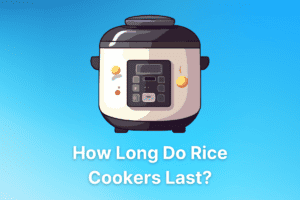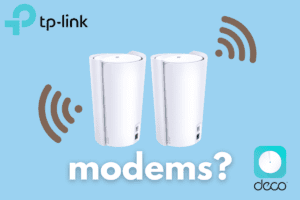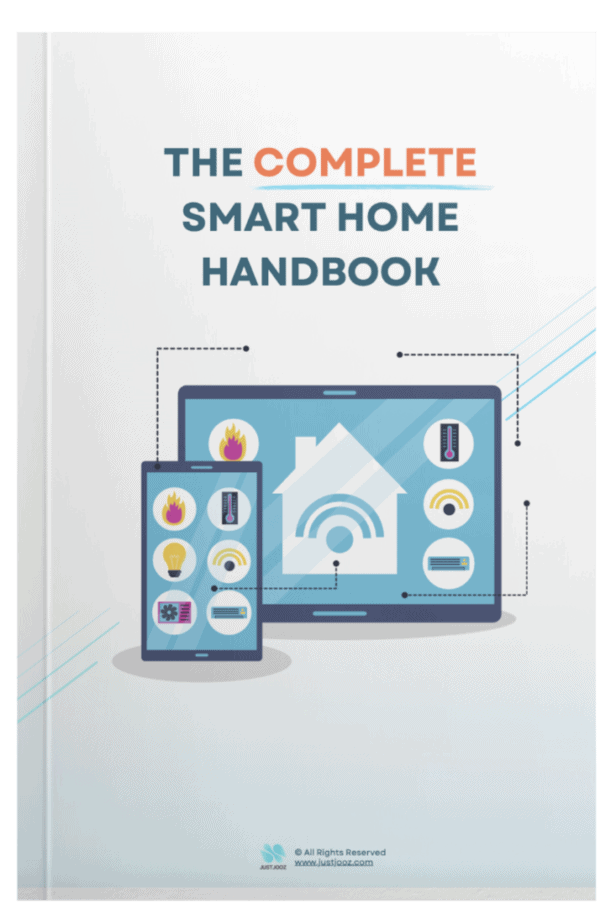How to Use a Japanese Rice Cooker: Tips and Techniques
We’re reader-supported; we may earn a commission from links in this article.
If you’re a cooking rice fan, you know that having the right tools is essential. A good quality rice cooker can make all the difference in achieving perfectly cooked white or brown rice every time.
In this post, we’ll discuss why a Japanese rice cooker is an advantageous investment for your kitchen and provide helpful tips on cooking various types of rice with ease.
We’ll also share some tips on how to cook different types of rice with ease and introduce you to some delicious recipes that pair well with soy sauce – an essential ingredient in many Japanese dishes.
Whether you’re new to cooking or consider yourself a pro, there’s always something new to learn when it comes to perfecting your skills in the kitchen.
So, if you want to take your love for cooking rice up a notch and impress your family and friends with mouth-watering dishes, keep reading!
Understanding Japanese Rice Cookers
Japanese cuisine aficionados must own a rice cooker to achieve the optimal flavor and texture of their favorite dishes.
Whether you’re cooking white or brown rice, the right cooker can make all the difference in flavor and texture.
When shopping for a Japanese rice cooker, there are several factors to consider, such as type, features, and how it works.
How does a Japanese rice cooker work? A Japanese rice cooker is designed to cook each grain of rice precisely, with the correct temperature and humidity, for a perfect result.
The device uses sensors to monitor heat levels and adjust accordingly throughout the cooking process.
It also has different settings depending on what type of grain you’re using (white or brown) as well as whether you want your grains cooked softer or harder than usual.
Types of Japanese Rice Cookers
There are several types of Japanese rice cookers available on the market today, ranging from basic models with manual controls up to more advanced fuzzy logic models which offer additional features like multiple pre-programmed settings and delay timers for convenience.
Basic models usually come with simple push buttons, while more advanced ones have digital displays that allow users to customize their cooking settings according to their preferences.
Understanding Japanese Rice Cookers is an important part of mastering the art of cooking rice. Practicing and being informed is essential to becoming an expert in utilizing your Japanese rice cooker to make delectable dishes for you and your loved ones.
To ensure success when using your rice cooker effectively, it’s essential to measure ingredients correctly, prepare grains before cooking, and understand how different types of rice cook differently.
Using Your Rice Cooker Effectively
Using your rice cooker effectively is key to getting the perfect fluffy grains every time. It’s important to measure ingredients correctly, prepare the grain before cooking, and cook different types of rice for optimal results.
Measuring ingredients correctly will ensure that you get the desired texture in your cooked rice. The correct proportion is one cup of raw rice to two cups of liquid, yet this could fluctuate depending upon the kind of grain and if it has been pre-soaked or not.
To get a firmer texture, use less water; for softer grains, add more liquid. Soy sauce can also be added for flavor at this stage if desired.
Preparing your grain before cooking is another essential step when using a Japanese rice cooker. This includes washing and soaking (if necessary) as well as any other preparation, such as chopping vegetables or adding spices or herbs, prior to putting everything into the appliance.
Doing so will help ensure that all components are cooked evenly and thoroughly without burning or sticking to the pot’s bottom surface during steaming cycles which can lead to unevenly cooked grains with an unpleasant burnt taste and smell afterward.
Using your rice cooker effectively can be a great way to make delicious meals with minimal effort. By employing the proper methods, you can go beyond basic meals and use your rice cooker to make more intricate dishes like porridge or mixed grain cooking.
Advanced Techniques with Your Rice Cooker
Did you know that your trusty old rice cooker can do more than just cook plain white or brown grains?
Discover how to unlock the potential of your rice cooker and make it a multifunctional kitchen tool with some creative techniques.
Let’s explore some advanced cooking methods with your Japanese rice cooker.
1. Mixed Grain Cooking:
Many cultures around the world enjoy meals made from a combination of different types of grain. Combining various grains, such as barley, wheat, and oats, with rice is a popular practice in many cultures.
Mixed grain cooking in a Japanese rice cooker is easy – simply measure out the desired amounts of each grain and add them to the pot before starting the machine.
The cooker will adjust its temperature and settings automatically to make sure each type of grain cooks evenly. Try experimenting with different combinations for delicious results.
2. Porridge Making:
Many cultures have enjoyed porridge for centuries as a nutritious breakfast option. You can employ your Japanese rice cooker to make porridge quickly and with no effort, without having to be vigilant over it on the stove or being concerned about burning it.
Simply add the desired ingredients to your rice cooker with milk or water and let it work.
Your porridge will be ready in no time at all – perfect for busy mornings when you don’t have much time to spare but still want something warm and nourishing first thing in the morning.
So there you have it – two great ways to get creative with your Japanese rice cooker.
Whether you’re looking for an alternative way to prepare traditional dishes like mixed grains or trying something new like porridge making, these techniques are sure to give your meals an extra special touch that everyone will love.
By mastering the advanced techniques of your rice cooker, you can create delicious and varied meals. Caring for your rice cooker is just as important in ensuring its longevity and performance over time.
Caring For Your Japanese Rice Cooker
Caring for your Japanese rice cooker is essential to ensure it lasts and provides value for money spent.
Cleaning instructions are easy to follow, while regular maintenance can help keep your appliance in top condition.
When cleaning your rice cooker, always unplug the unit first before wiping down the exterior with a damp cloth.
Avoid using harsh cleaners or abrasive sponges, as they may damage the surface of the appliance.
For tougher messes, try soaking a soft cloth in warm water and mild detergent before gently scrubbing away any stuck-on debris. Be sure to rinse off all soap residue with clean water afterward.
For interior parts like removable cooking bowls and lids, hand wash them separately with warm, soapy water and dry thoroughly after rinsing off all traces of detergent or soap suds.
Never submerge electric components such as heating elements in liquid or use scouring pads on them, as this could cause permanent damage to these delicate parts.
Japanese Rice Cooker Maintenance Tips
In terms of maintenance tips, it is best practice to check if there are any loose connections inside your machine periodically – especially if you have moved it around recently – as these can affect how well your rice cooker works over time.
Additionally, be mindful that certain types of grains like brown rice need more water than white varieties when cooked; adjust accordingly when measuring out ingredients so you do not end up burning dinner.
Finally, avoid pouring soy sauce directly into the bowl unless specified by manufacturer instructions – otherwise, you risk staining its surfaces permanently.
It is important to care for your rice cooker properly in order to ensure it lasts a long time and functions correctly. Let’s explore some common queries related to the utilization of Japanese rice cookers.
Frequently Asked Questions (FAQs)
Frequently, queries arise concerning the operation of Japanese rice cookers. Here we answer the three most common queries about using these devices.
What’s the difference between regular and fuzzy logic models?
Regular rice cookers use pre-programmed settings for different types of grain and water levels. Fuzzy logic models are more advanced as they have sensors that can detect temperature changes in the pot during cooking and adjust accordingly for optimum results. This makes them better at producing fluffy, perfectly cooked grains every time.
Can I cook other things besides just plain white/brown rice in my Japanesericcecooker?
Yes. You can make all kinds of dishes with your Japanese rice cookers, such as porridge, risotto, sushi rice, congee, or even oatmeal if you get creative with it. Just be sure to follow instructions carefully so you don’t end up with a mess on your hands.
How much water should I add per cup of uncooked grain?
This depends on what type of grain you’re cooking – generally speaking, 1 cup of dry grain requires 1 ½ cups of liquid but this may vary slightly depending on how long you plan to let it soak before cooking begins. When it comes to the amount of liquid needed, it is always best to consult the instructions for each grain.
How do you use a Japanese rice cooker?
To use a Japanese rice cooker, start by measuring out the desired amount of uncooked rice. Add the measured uncooked rice to the inner pot and cover it with cold water. Close the lid securely and plug in your cooker. Select either “white” or “mixed” mode, depending on your preference for texture, then press start. Once cooking is complete, unplug and open the lid carefully, as steam will be released from inside. Stir lightly before serving for best results.
How to make rice in a Japanese rice cooker?
To make perfect Japanese rice in a rice cooker, measure out the desired amount of uncooked white or brown rice and rinse it thoroughly.
Place the rinsed grains into the inner pot of your cooker and add water according to the manufacturer’s instructions.
Close the lid securely, select ‘cook’ on your machine, and let it do its work for about 25 minutes until all liquid is absorbed by the grains.
Allow an additional 10-15 minutes for steam cooking before opening your cooker’s lid to serve up perfectly cooked fluffy Japanese rice.
How do you use a rice cooker step by step?
1. Begin by filling the rice cooker pot with your desired amount of uncooked rice and water.
2. Measure out 1 cup of dry white or brown rice per person, adding 2 cups for extra servings if necessary. Opt for filtered H2O over tap when cooking up white rice, but either will suffice if you’re going with brown.
3. Pour the measured amount of water into the pot until it reaches just below the “Max” line marked inside on most models – adjust this measurement depending on how moist you like your cooked product to be (less liquid = drier finished product).
4. Place a lid onto the top and secure it tightly before plugging in and turning on your appliance – set the timer as needed according to the manufacturer’s instructions based upon which type(s) of grain(s) are being cooked at that time (white/brown/mixed grains etc.).
5. Allow the machine to cook for a specified length of time before unplugging from the power source once done cooking – remove the lid carefully using oven mitts or other heat-resistant tools as steam will escape quickly. Serve hot & enjoy.
What is the difference between a rice cooker and a Japanese rice cooker?
A Japanese rice cooker is a specialized appliance designed to cook short-grain Japonica rice.
A Japanese rice cooker typically has settings for various ways of cooking, including boiling and steaming, plus the capacity to modify the amount of water used.
A regular rice cooker can also be used to cook short-grain Japonica rice but may not have the same precision or options available with a Japanese model.
Additionally, many people prefer using a Japanese model because it produces higher quality results than traditional models due to its ability to adjust temperatures and times more precisely during cooking cycles.
Conclusion
Using a Japanese rice cooker is an easy and efficient way to cook perfect, fluffy rice every time.
Achieving delectable results with minimal effort is attainable when you pick the right rice cooker for your requirements.
Whether you’re looking for a simple solution or more advanced features like timers and temperature control, there are plenty of options available when it comes to using a Japanese rice cooker.

Justin Chia
Justin is the author of Justjooz and is a data analyst and AI expert. He is also a Nanyang Technological University (NTU) alumni, majoring in Biological Sciences.
He regularly posts AI and analytics content on LinkedIn, and writes a weekly newsletter, The Juicer, on AI, analytics, tech, and personal development.
To unwind, Justin enjoys gaming and reading.





